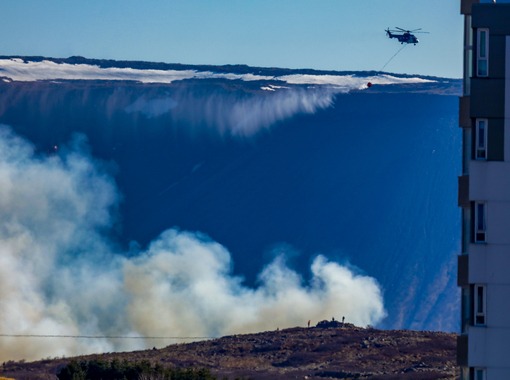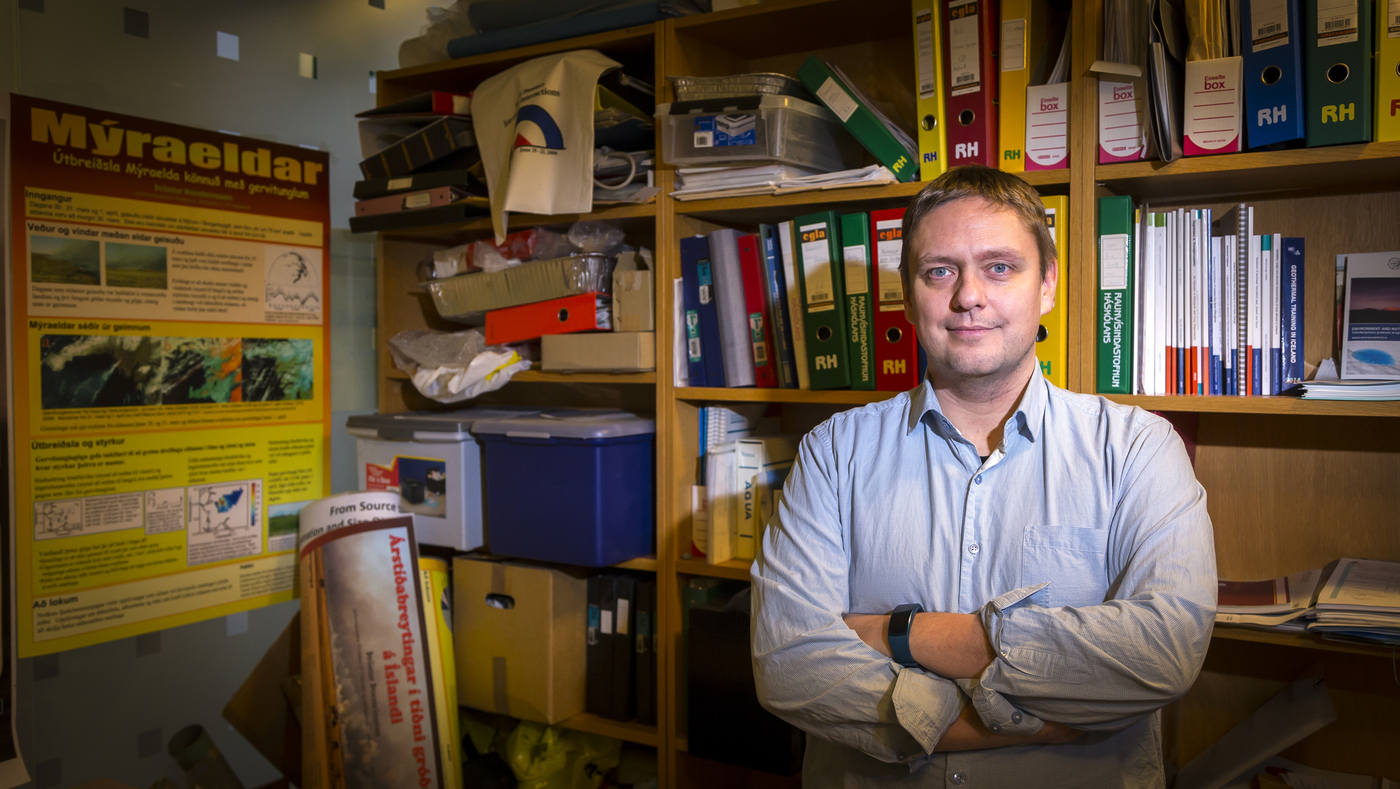The vital knowledge created at the University of Iceland helps our society to tackle diverse challenges. These challenges include environmental and climate changes and natural disasters, as well as a variety of threats to human health and well-being, as it says in the Strategy for the University, UI26. Universities are sources of knowledge that play a key role in identifying solutions to the challenges outlined in the United Nations Sustainable Development Goals, the SDGs.
Anyone who follows the news will have noticed an increase in the frequency of wildfires that threaten human lives and health, as well as damaging the environment, ecosystems and human infrastructure. Even in Iceland, wildfires have become a problem in a way that few people would have predicted.
Many institutions are now thinking more seriously about the risk of wildfires. For example, the Department of Civil Protection website recognises the danger, explaining that: "Due to a warming climate, changes in agriculture and increased forestation, there is a heightened risk of wildfires. It is important that fire safety and planning authorities start giving serious consideration to the risk of wildfires in terms of path building, ditches, fire control zones, access to water and forest management."
The Icelandic Institute of Natural History website contains a non-exhaustive overview of past wildfires, covering the period from 2006 until the present day. It includes information on the extent of the burned area in hectares and the nature of the terrain. Last year, for example, there were four serious wildfires that occurred in forested areas, as well as areas vegetated mainly by moss, heather, grass and lupin. The total burned area was around 100 hectares. The largest fire occurred in the populat recreational are Heiðmörk, near Reykjavík, where an old birch forest was damaged or destroyed and almost 60 hectares burned.
Climate change will cause more frequent wildfires
"With the way our climate is changing, we can expect to see more frequent wildfires and longer wildfire seasons. Wildfires are now occurring further north. Recently we have seen wildfires in Siberia, Greenland and Alaska, for example," says Þröstur Þorsteinsson, professor of environment and natural resources at UI.
He is now working on a study that aims to find ways to evaluate the risk of wildfires in various areas of Iceland, map flammable vegetation and vulnerability to damage, and create models to predict the potential spread and severity of wildfires in different areas.
Processing data about wildfires in Iceland, which is part of Þröstur's study, shows that serious summer wildfires in Iceland are a fairly new phenomenon. "An emergency response plan has also been designed for Skorradalur, partially based on the work we've been doing for this project," says Þröstur. Skorradalur has often been in the news in recent years when the Department of Civil Protection declares alert phases due to the risk of wildfires. The valley, which is a popular area for holiday cabins, is forested from the lake shore to the highest ridges and can only be accessed by a single road.
Þröstur's research has increasingly focused on air quality, since it is such a vital factor in the health of entire ecosystems. "This includes public health, which may be affected by wildfires, sandstorms, power plants that release greenhouse gases and toxic gases like hydrogen sulphide, and traffic pollution," explains Þröstur.
"We have seen increasing levels of vegetation in Iceland, especially trees, along with reduced grazing and many more holiday cabins being built," says Þröstur, adding that more and more people are also camping in the Icelandic countryside. All these factors increase the risk of wildfires.

Thinning vegetation is a novel idea for many people
Þröstur argues that more accurately predicting the likelihood of wildfires and the risk in different areas will enable us to respond more effectively and minimise damage.
"This research has highlighted the threat of wildfires. In forested areas with lots of holiday cabins, this issue is now taken more seriously. There is still a lot of room for improvement, but it's good that the risk is on the radar," says Þröstur. "We have to change the way we think about vegetation. For a long time, we have been planting close to houses and giving no thought to precautions against wildfires. Thinning vegetation and forests is still a novel idea for many people."
Þröstur says that we need to use innovative thinking to find solutions to protect against wildfires, especially precautionary measures.
"In Iceland we generally have plenty of water, so solutions that keep certain belts damp, even in droughts, could be one way to prevent fires spreading over such large areas."
Strong links with the UN Sustainable Development Goals
Þröstur's research was inspired by the major wildfires that occurred in the Mýrar region in 2006, covering over 73 square kilometres. This event clearly demonstrated the threat that wildfires pose here in Iceland.
"We have seen increasing levels of vegetation in Iceland, especially trees, along with reduced grazing and many more holiday cabins being built," says Þröstur, adding that more and more people are also camping in the Icelandic countryside. All these factors increase the risk of wildfires.
The new Strategy of the University of Iceland places particular emphasis on the aforementioned SDGs, which address the major challenges now facing humankind and the future quality of life for everyone on our planet. "Wildfires are directly and indirectly related to the SDGs," says Þröstur.
He mentions that Goal 15, life on land, includes conservation of ecosystems and forests. Wildfires are also linked to Goal 13, climate action, since they have a lot to do with the carbon cycle.
"Goal 11, sustainable cites and communities, also addresses air quality. Smoke from wildfires can be extremely detrimental to air quality."
An extremely practical project
This project is extremely practical, since it focuses on climate issues and risk of loss of human life and aims to identify solutions that could improve health and safety for humans and entire ecosystems in certain regions, as well as protecting human infrastructure.
"It is hard to fully express how important research is," says Þröstur. "For example, we need research in order to demonstrate causative links between pollution and health. This evidence then hopefully leads to new legislation that protects the public from the harmful effects of pollution. Acquiring a better understanding of the nature, origins and development of any research subject makes it more likely that we can find ways to prevent harm and take effective precautions."




